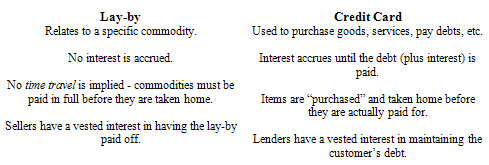The year is 1985. I’m eight-years-old and sitting cross-legged in a rundown classroom with 20 or so other children, staring with horror at a small television screen sitting precariously atop a rickety school desk. The film is one of that peculiar breed of Christian propaganda films which emerged in the late 70s and early 80s designed, quite literally, to scare the hell out of impressionable young children. The films were set in the not-too-distant apocalyptic future, when Christ returns and “faithful” believers are conveniently whisked away to heavenly bliss, leaving non-believers to await final judgment.
A Thief in the Night (1972) thus envisioned a future world populated wholly by those who had been “left behind” in wake of the second coming. With the faithful neatly tucked away somewhere in heaven, non-believers were forced to come to terms with the reality of their unhappy predicament.
Without the influence of Christians (who, as the “salt of the earth”, presumably acted as a kind of moral preservative for mankind in general - a puzzling fact given that abortion, divorce, child abuse and the like occur in the same frequency within the church as outside it), the world descends into utter depravity. As part of this fanciful telling of the future, a singular figure emerges to take charge (the “antichrist”) uniting the troubled people of the world together under a single unified “world order”.
Advertisement
At the height of his power, this antichrist figure (wearing a white suit no less) establishes a uniform monetary system based on a barcode-like mark which is permanently fixed to either the wrist or the forehead (the infamous “mark of the beast”). In order for future citizens to purchase food or clothing, they would be forced to display their “mark” - a tattoo which functions much like the magnetic strip on a credit card.
The comically horrific climax of the film involved a scene where the new faithful - those who were “left behind” but have since repented and vowed to follow Christ - are rounded up by the antichrist’s henchmen (dressed in plain green jumpsuits like the hapless villains from a Bond film) and promptly beheaded. For a contemporary audience the scene is somewhat comical, but for a ten-year-old boy in the 80s this kind of spectacle leaves an indelible mark (to this day I still fear moustachioed men wearing green jumpsuits).
It is somewhat telling that these poorly scripted, abysmally acted films made a clear connection between the “end of days” and the emergence of credit-based, cashless societies. The credit card, which was in its infancy in the 60s and 70s, along with the barcode became a key point of focus for a particular brand of religiously motivated techno-fear. The “mark of the beast” (wrongly identified with the number 666 - the “number of man” in the book of Revelation) was linked with the credit card and the newly evident non-material aspects of money.
Through an inventively literal interpretation of Revelation (a book which is written in purposefully opaque and imaginative apocalyptic language), fundamentalist Christians were able to tie the growing transcendence of money to a religiously cast apocalypse. In short, credit cards were equated with the devil.
In my post-childhood years, I wonder whether the fundamentalists were not far wrong, given the sheer number of people who have been devastated by crushing personal debt and driven to bankruptcy by the seductive plastic sheen of the credit card.
We often forget that the credit card - indeed the credit phenomenon - is only a relatively recent development. Just 30 years ago, it was not uncommon to conduct the bulk of one’s banking at a branch. There was something nostalgic and tactile about handing over a bank book to the teller and having them print out a statement on a nattering dot-matrix printer. Granted, credit cards were widely used in the 70s and 80s, but there was also a significant overlap with consumers who still preferred to sign a personal cheque or hand over large wads of cash when making purchases.
Advertisement
The dominant mode of small-scale “credit” transactions during this period were in store lay-bys, where customers have items put aside, pay a small deposit and pay the remainder off by instalments.
Note the significant differences between a lay-by purchase and a credit card purchase:

Discuss in our Forums
See what other readers are saying about this article!
Click here to read & post comments.
12 posts so far.